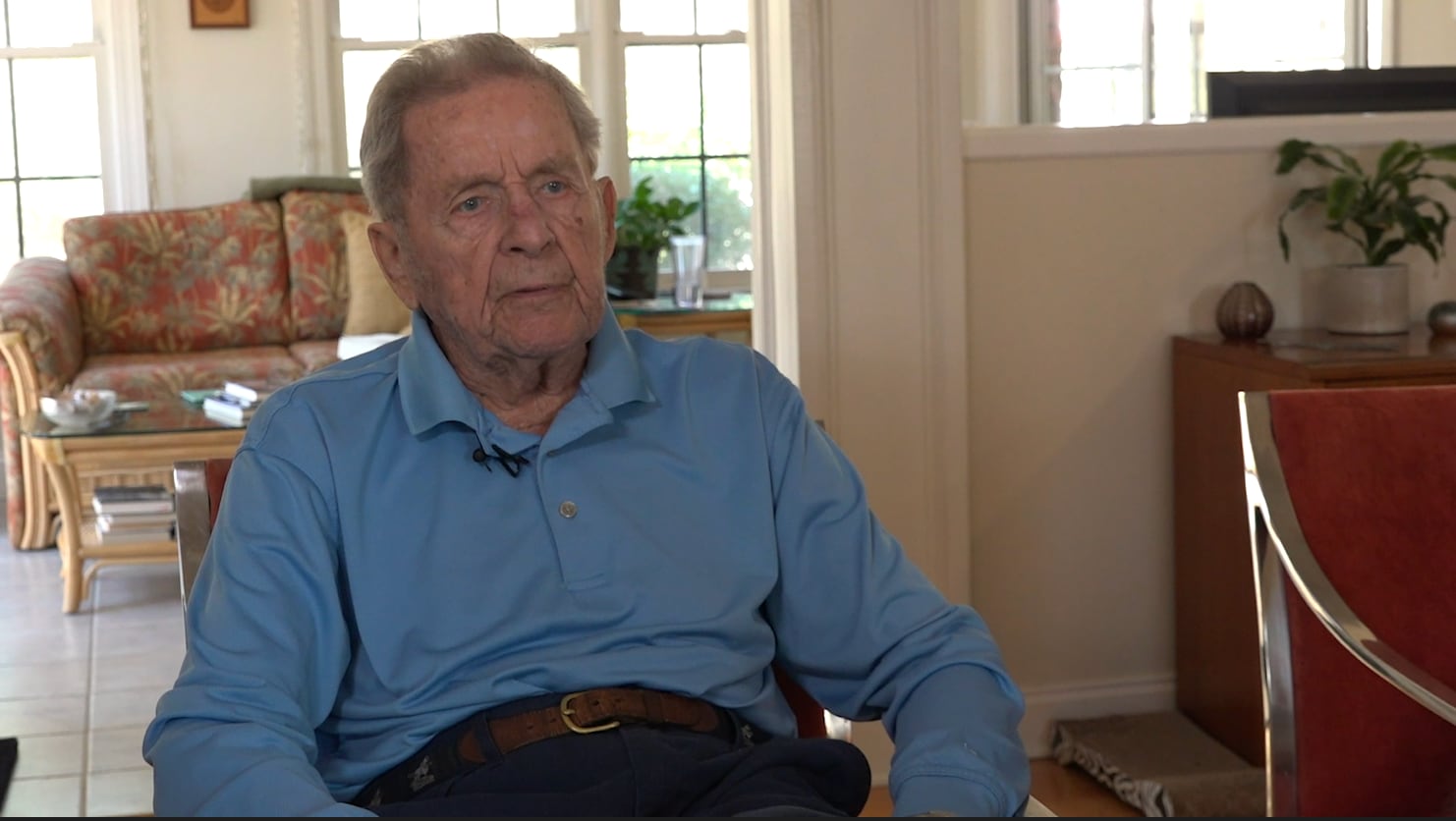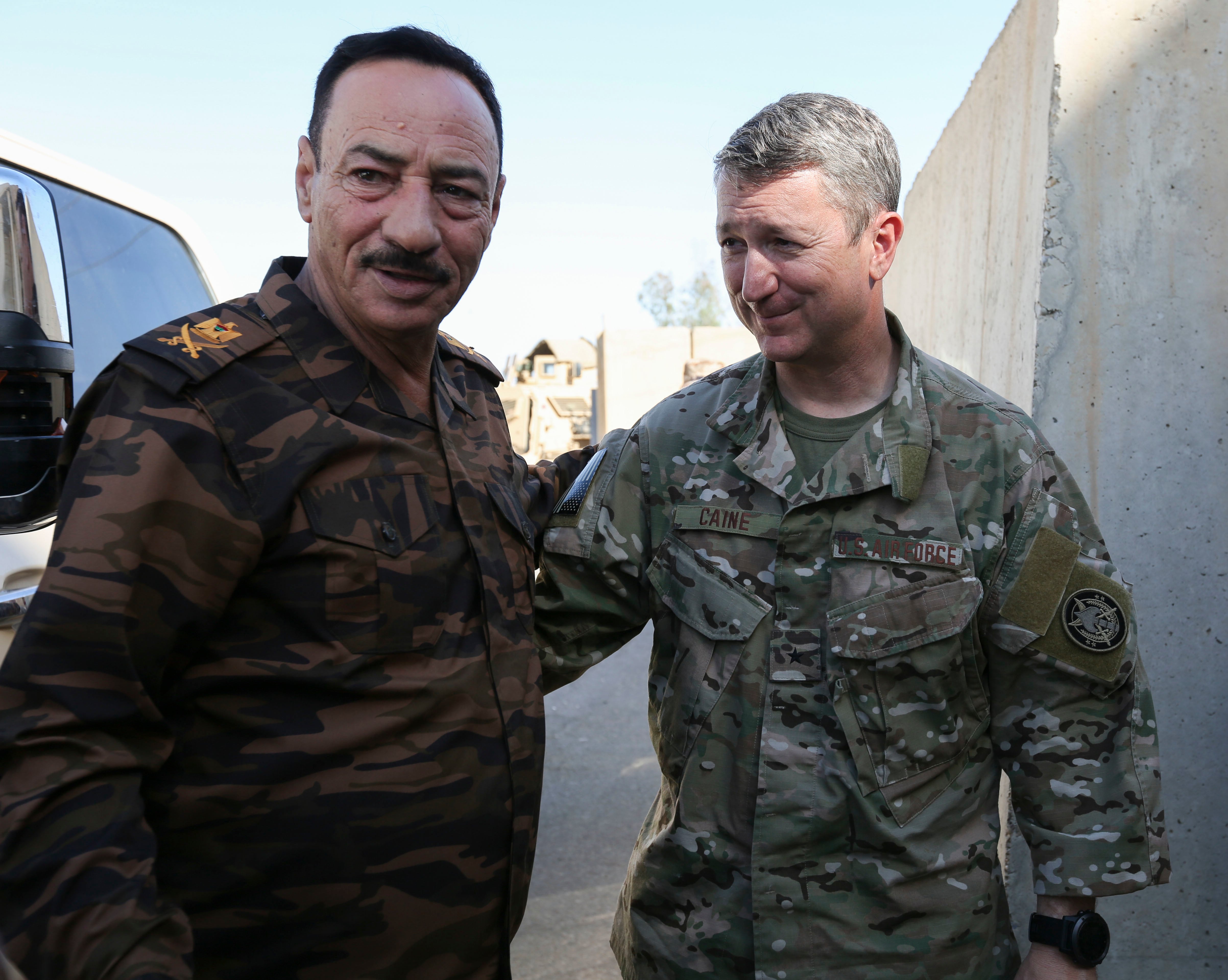Editor’s note: Feb. 19, 2025, marks the 80th anniversary of the start of the Battle of Iwo Jima. In February 2020, Military Times interviewed Marine Corps veteran and Iwo Jima survivor Don Harris. Harris died on July 25, 2020.
“We were all scared,” Marine Corps and World War II veteran Don Harris told Military Times in 2020. “Anybody who wasn’t was crazy. Sometimes, it was a combination of both crazy and scared.”
As a member of the Signal Company, 4th Marines, Harris made an astounding five amphibious landings during the Pacific War: Roi-Namur (Kwajalein), Eniwetok, Saipan, Tinian and Iwo Jima.
Born in Jersey City, New Jersey, in 1923, Harris was a recent high school graduate when the attack on Pearl Harbor occurred. Thirteen days later, Harris turned 18 and a year later found himself on board a bus for Parris Island and an indefinite enlistment in the Marine Corps.
Upon recalling his time at boot camp, Harris quipped that most of his memories from that time “are not repeatable to the public because boot camp was a lot of profanity.”
“I thought I knew all the four-letter words, but I learned some new ones,” Harris said with a laugh.
In addition to his expanding vocabulary, Harris credited his drill instructor, Sgt. Abbot, a veteran of Guadalcanal, to much of his survival.
“He was tough on us. He made us do things by the book and I am forever indebted to him,” said Harris.
From Parris Island, Harris was sent to radio school at Hadnot Point, the precursor to the storied Camp Lejeune, North Carolina, which was being built around the Marines at the time.
“When the war broke out,” Harris said, “the Marine Corps had essentially one brigade that was smaller than a division. By the end of the war, there were over 500,000 that had gone through the Marine Corps.”
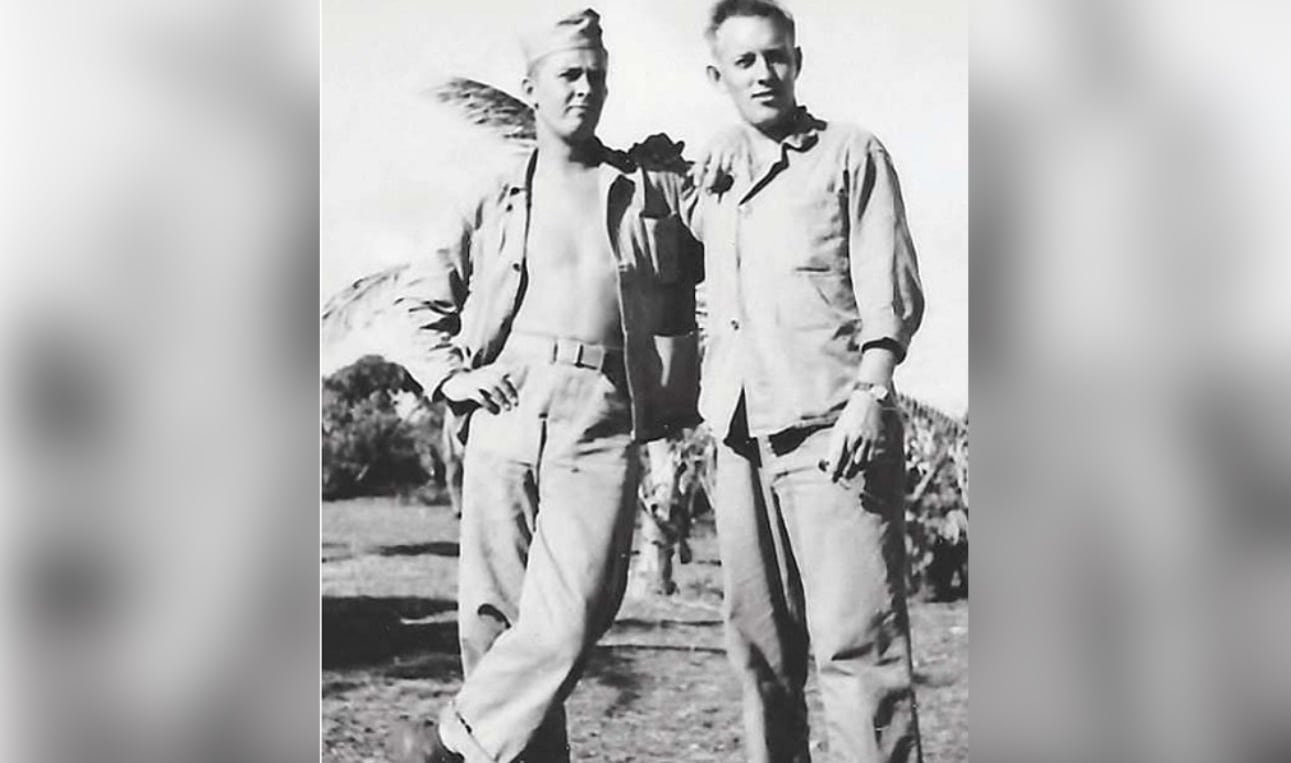
Assigned to the Signal Company, 4th Marines, Harris was among the first and only divisions that went directly from the United States straight into combat — beginning what would become his first of five assaults during the Pacific War.
Roi-Namur, Kwajalein, was the home of the largest coral atoll in the world, with the island covered in dense jungle, concrete fortifications and Japanese barracks.
The landing itself “became a chaotic jumble of rapid events,” according to Capt. John C. Chapin, who was part of the invading force.
Amid the chaos, Harris recalled, “Our guys destroyed a big block house, not knowing it was a storage facility for torpedoes,” before noting that many, if not all, of the 4th Division’s casualties — 20 Marines killed and another 100 wounded — came from that explosion.
From offshore, according to the National Parks Service, an officer watched as “the whole of Namur Island disappeared from sight in a tremendous brown cloud of dust and sand raised by the explosion.’ … Another officer recalled that ‘trunks of palm trees and chunks of concrete as large as packing crates were flying through the air like matchsticks. … The hole left where the blockhouse stood was as large as a fair-sized swimming pool.’”
After his first combat experience, Harris caught wind that a company in the tank battalion was being redesignated into a reconnaissance unit.
Harris jumped at the chance.
“I didn’t like radio,” he said with a laugh.
At the time, reconnaissance units were still very much in their infancy. The original concept was that of “observer groups” tasked to scout possible beach landing locations, soil permeability for said landings, clearing beach obstacles and observing enemy activity.
Reconnaissance Company, Headquarters Battalion, 4th Marine Division, needed three radio operators. Harris stepped forward.
“I came to the conclusion that if it had to be done, why shove it off on someone else?” Harris told a Marine Corps League Detachment during a February 2013 presentation. “Why not just do it? It might be a little cocky; it might be confidence or maybe just stupid, but I never had second thoughts.”

From Roi-Namur, Harris became a radio operator with Recon Company, landing at Eniwetok, Saipan and Tinian before his final operation: Iwo Jima.
And once again, Harris stepped forward. Returning to Maui in July 1944, Recon Company asked for 12 volunteers for an operation that would involve a lot of swimming. Harris recalled that at that time they were unsure of their next destination but knew it would be early 1945.
Harris and the 11 other volunteers began training with the newly established Navy Underwater Demolition Teams, or UDT, the forerunner of the U.S. Navy SEALs.
They were “half fish and half nuts,” Harris recalled.
Alongside the UDTs, Harris and his fellow Marines underwent several weeks of specialized training, learning to use fins and masks, stealth techniques, the usage of maps and compasses and how to be dropped off and picked up by rubber boats on the move.
None of the Marines washed out, a point of pride for Harris.
One issue, however, was that the round, Navy-issued mask didn’t seal to Harris’ face, allowing for water to seep in.
“We saw some young island kids riding sea turtles, wearing these little goggles,” he told Leatherneck Magazine in its September 2014 issue. Made of bamboo and held in place by a rubber strap, the goggles were hand-made by the Hawaiian residents.
“They went into the eye socket and made a really good seal. I used them instead of the face mask and caught a lot of hell for them, but never wore them in front of an officer.”
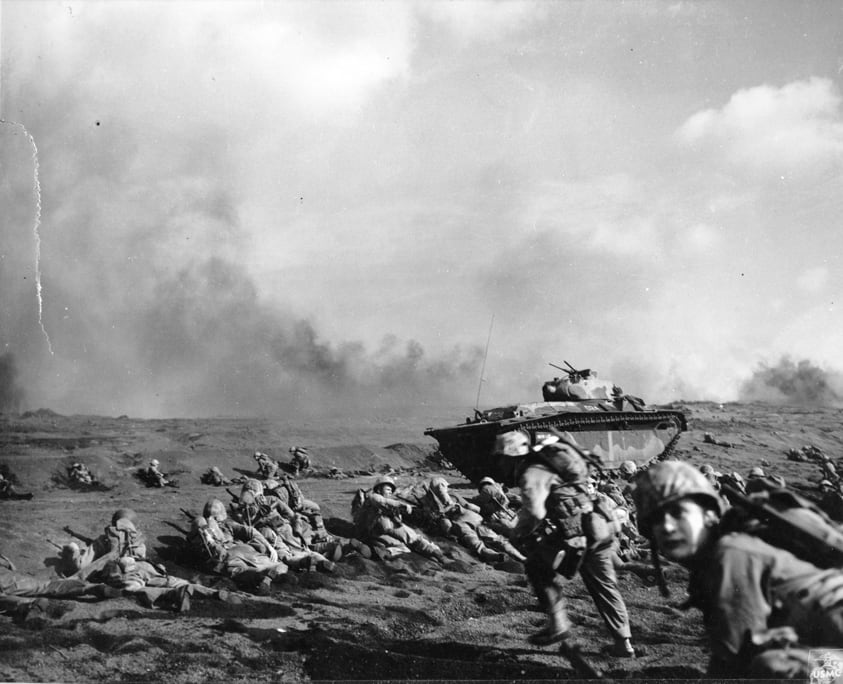
Their main task was to determine what the black strip around Iwo Jima was made of. Arriving at Iwo on Feb. 16, 1945, the men got into the water around 11:00 a.m. the following day. Harris recalled that the waters around Iwo were quite different from that of Maui — namely, they were ice cold.
Working in two-man units, Harris and his team stealthily plunged into the Pacific. While they found no obstacles, the team was perplexed by the black material ringing the island.
“I don’t think any Marine who was on that mission ever thought that that material, we’ll call it sand, would support any kind of tracked or wheeled vehicle. Yet the reports turned in by the Navy said everything was fine to go and it wasn’t. The mess on the beach was beyond comprehension,” Harris told Military Times.
Originally told to go ashore to discover more about the island’s terrain, as no American had ever set foot on Iwo Jima, enemy fire kept them from getting any closer than 100 yards before being picked up.
Three days later, on Feb. 19, across the black volcanic sand, 30,000 U.S. Marines crawled, ran and slipped towards entrenched Japanese troops on Iwo Jima. It was predicted that reinforcements would not be needed. Instead, the Marines were met by 21,000 Japanese soldiers and a dizzying network of caves, tunnels and concrete pillboxes that a determined enemy used to deadly effect. The tenacious defense at Iwo forced Adm. Raymond Spruance to commit approximately 40,000 more men to the campaign.
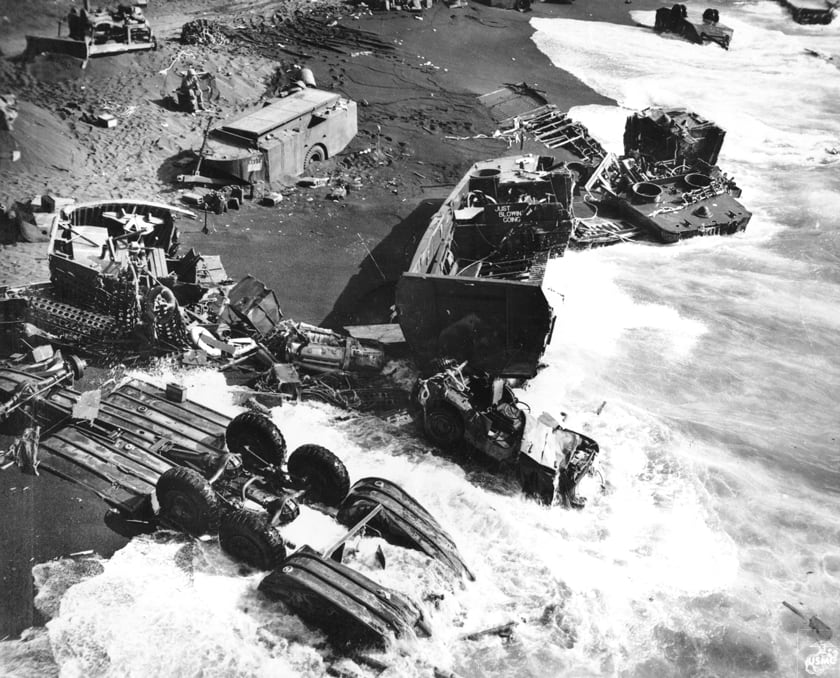
Harris and his men later went ashore on Iwo Jima, experiencing several close calls — including a terrifying moment when the 24th Regiment pinned him down in a case of friendly fire — but was never injured badly enough to be taken out of combat.
Harris was back in Maui when the first atomic bomb was dropped on the Japanese city of Hiroshima on Aug. 6, 1945. Sitting in a dental chair, he received the news, recalling that his first feeling was that of relief.
“Oh my God, thank God it’s over. Work was stopped. Everything stopped. I think I can say every guy whom I was in contact had the same reaction of ‘thank God.’”
After the war, Harris was rehired by New York Life and went to Springfield College, receiving a Bachelor’s degree and a Master’s in Guidance and Personnel Management using the G.I. Bill. He retired in 2004.
Harris died on July 25, 2020, at the age of 96.
Harris’ final wish was to be buried at sea — a request that is still ongoing, his wife, Mary Beth Harris, told Military Times on Tuesday. His ashes remain aboard the Harry S. Truman, the aircraft carrier that collided with a merchant tanker off the coast of Egypt last week.
“He’s deployed,” said Mary Beth Harris.
Harris is survived by his wife, Mary Beth Harris; five children: Donald Harris Jr., David Harris, Kathryn Harris, Michael Harris and Barbara Harris; stepdaughter, Kathleen Monroe; 11 grandchildren; and four great grandchildren.
Claire Barrett is the Strategic Operations Editor for Sightline Media and a World War II researcher with an unparalleled affinity for Sir Winston Churchill and Michigan football.
